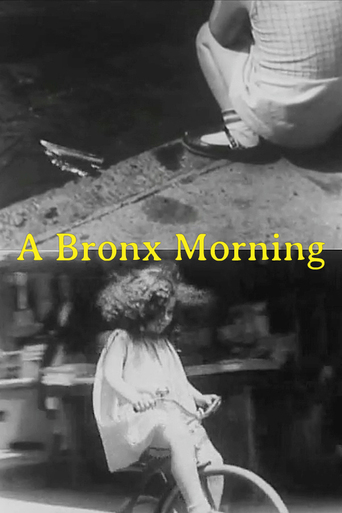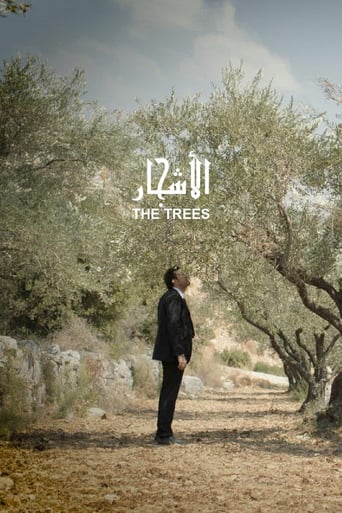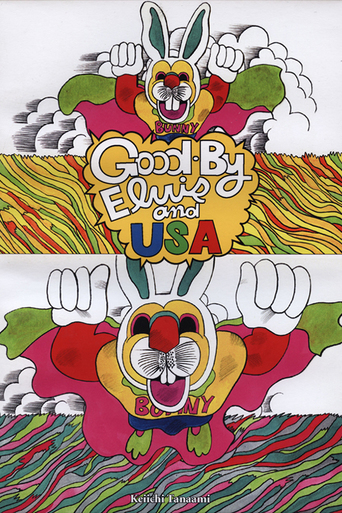

A Bronx Morning (1931)
Arrival in the Bronx is shown with a view from an elevated train as it enters the city. Then follows a montage of sights from the Bronx. Many typical neighborhood activities are shown, along with scenes from many local businesses.
Watch Trailer
Cast
Similar titles

Reviews
Too much about the plot just didn't add up, the writing was bad, some of the scenes were cringey and awkward,
It is an exhilarating, distressing, funny and profound film, with one of the more memorable film scores in years,
This movie feels like it was made purely to piss off people who want good shows
Mostly, the movie is committed to the value of a good time.
Arrival in the Bronx is shown with a view from an elevated train as it enters the city. Then follows a montage of sights from the Bronx. Many typical neighborhood activities are shown, along with scenes from many local businesses.It's very striking that this was filmed during the Depression, with all the signs in store windows encouraging people to shop now that prices are lower, or they are going out of business. There was at least one "fire sale" (a term I had no idea was in common use). This makes the film something of an important historical document.But also, with so many clever angles and a focus on things that the average person may not even think to capture, the film is ahead of its time. A documentary, but also a work of art. I'm sure someone has carefully studied this film, trying to identify the businesses and maybe even the people.
Jay Leyda decided to pay tribute to the New York borough of the Bronx in this short film. Instead of focusing on skyscrapers and the spectacular, it focuses on more mundane things. Taken from what appears to have been public transportation, his camera zips by various tenements and landmarks. Then, it suddenly slows to show the people--shopping, walking and going about their lives. While I am pretty sure this will bore a lot of people, the film is worth preserving for two obvious reasons. First, the camera-work is quite nice--and it's not just like a travelogue. His choices of what to show and how to focus was often rather artistic--even when it was VERY mundane. Second, think of the history you are seeing. Hollywood films never show this sort of stuff and their view of New York was almost exclusively a sanitized image of Manhattan. Worth a look.
Jay Leyda covers the borough of the Bronx in this historically and visually interesting eleven minute documentary shot before lunch. As historical artifact it captures time, place and character of a section of New York City that was only known for The House That Ruth Built. Leyda's effective unorthodox style offers more than a straight forward portrait of the Bronx as he plays with abstraction and fractured image. Aided immensely by the shadow stretching sun rising over the East River, he creates expressionistic canvases in a documentary setting of city street and storefront. Stylistically, Bronx evokes a Russian influence of Alexander Rodchenko photography and filmmaker Sergei Eisenstein montage, complete but a little over done with homage baby carriages. The editing is a little sloppy at times and there is some image repetiveness but Leyda's imaginative eye keeps things interesting most of the way.
The technique and material in this short feature are both interesting, and they fit together much better than might be expected. Jay Leyda's avant-garde technique works surprisingly well in conveying the sights and atmosphere of the Bronx of his era. For the rather arty methods to blend together with the down-to-earth nature of the Bronx is rather an achievement.Leyda's use of the camera combines rapid montage of loosely-related images, similar to that in the features of Vertov and other Soviet directors of the era, with the basic 'city symphony' approach exemplified by Ruttmann's excellent Berlin feature. The beginning and the end also feature some of Leyda's own abstract ideas. The actual material, by contrast, shows everyday scenes from a lot of different Bronx businesses and neighborhood activities.It's worth seeing a couple of times, since the technique is rather distinctive, and since it also does well in preserving an interesting neighborhood as it was in the 1930s.

